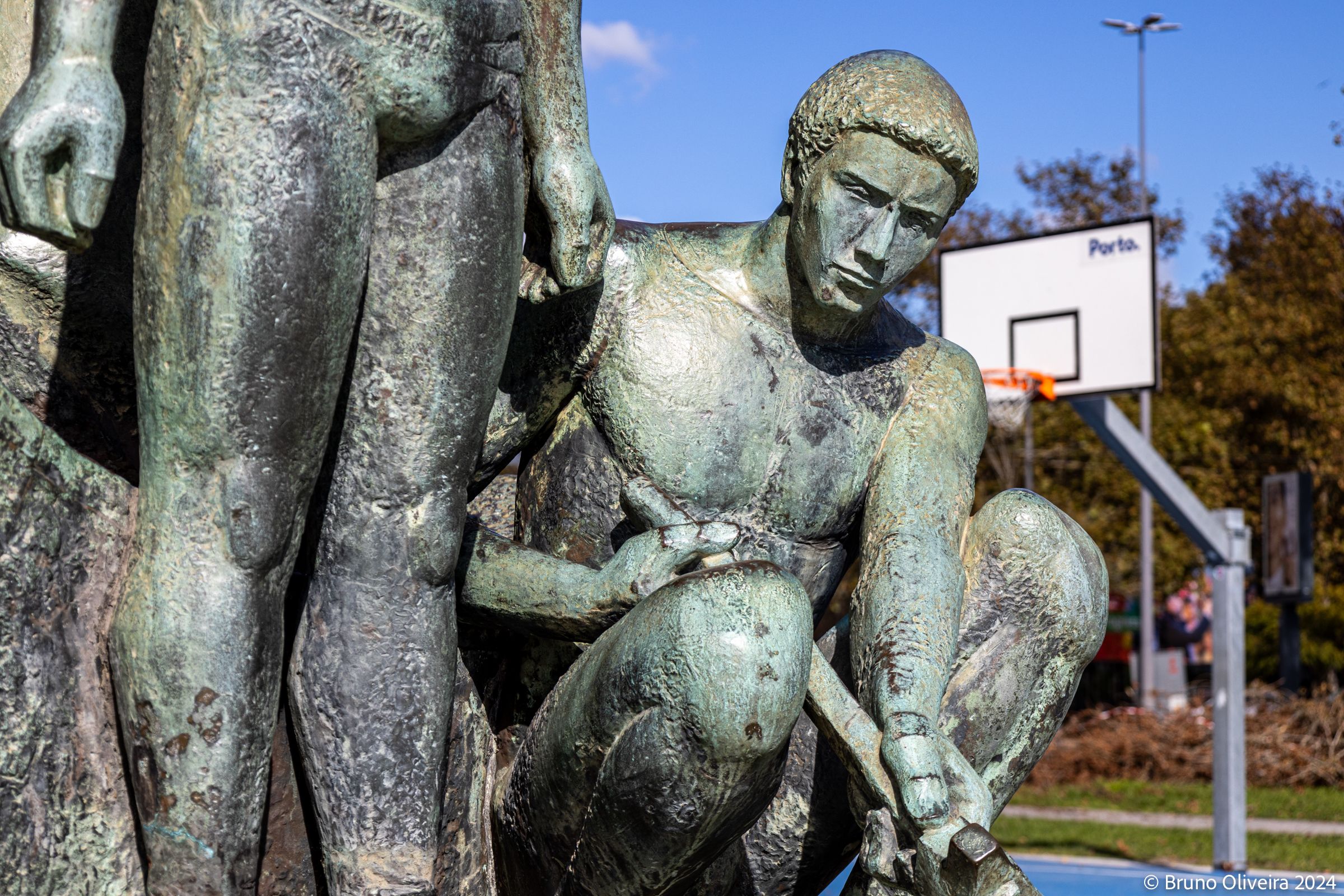- Home
- Tourism
"À Grei": Restoration of a Monument Honoring Porto’s Maritime Legacy
Post by: Editorial Staff
Published in:Oct 27, 2024
The "À Grei" monument, located in Jardim de António Cálem in Porto, has undergone extensive conservation work to restore its historical and artistic integrity. Created in 1960 by sculptor Lagoa Henriques, this tribute commemorates the contributions of Porto’s shipyard workers and citizens who supported Prince Henry the Navigator's first maritime expeditions. The restoration included cleaning the stonework, fully replacing 316 metallic inscriptions, and re-engraving the map of Portugal's discovery routes. This project, part of Porto’s Public Art Collection, brings renewed appreciation for this monument’s rich cultural and historical symbolism.

The monument "À Grei," located in the Jardim de António Cálem in the Lordelo do Ouro neighborhood of Porto, recently underwent a comprehensive restoration to preserve its historical and artistic significance. This project, led by the city, included a series of meticulous steps to restore the monument's original splendor: the stonework was cleaned and treated, all metallic inscriptions (316 characters) were fully replaced, and the map illustrating Portugal’s maritime discovery routes was re-engraved and repainted.
Created by the sculptor Lagoa Henriques, "À Grei" was erected in 1960 to commemorate the 500th anniversary of the death of Prince Henry the Navigator. The installation was enhanced by a carefully planned urban design by architects Luís Cunha and Vasco Mendes, highlighting the monument’s significance and the historical importance of the site.
The bronze sculptural ensemble consists of three male figures representing the shipyard workers and citizens of Porto who contributed to building, provisioning, and manning the first fleet sent by Prince Henry in 1415. This tribute honors those who, through their labor and courage, supported the initial Portuguese maritime expeditions, which were crucial to the Age of Discoveries.
In addition to the bronze figures, the monument features a stone mural. One side of the mural illustrates the maritime routes explored by Portuguese navigators, while the other side displays a transcription of the "General Chapters of the City of Porto in the Courts of 1436," acknowledging Porto’s vital role in supporting maritime ventures of that period.
With this restoration, "À Grei" regains its original aesthetic and symbolic value, allowing for a full appreciation of its significance. It reaffirms its place as an essential piece in Porto's Public Art Collection.


Source:
CM Porto